Vanilla bean is an ingredient that is versatile and delicious, which is why so many people prefer to use it in its natural form whenever possible. It has a floral and sweet flavor profile along with woody and smoky undertones. However, vanilla beans can be pricy and may not always be available, which is why it’s important to be aware of the top 6 vanilla bean substitutes.
What is vanilla bean?
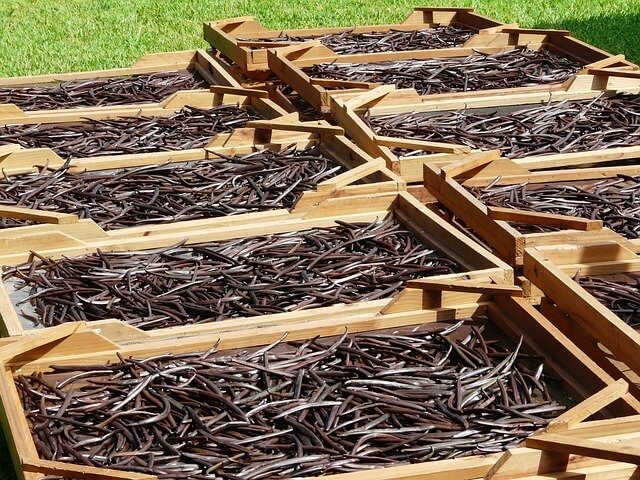
While vanilla beans come from orchid plants, they only come from two species out of more than one hundred. Orchids are pollinated by hand and are not allowed to ripen since it will cause the vanilla beans to split, which makes them unfit for sale on the market. After the beans are harvested, a treatment process is applied that can take several months. Most vanilla beans are made into vanilla extract, which is used in many baked goods.
How healthy (or unhealthy) is it?
As you can see from the nutritional breakdown below, there aren’t a lot of nutrients associated with vanilla beans. They do carry a hefty amount of calories per 100 g, however, so moderation when using them is recommended. However, small amounts of nutrients like magnesium, iron, and zinc are found in the beans, which can help with a healthy diet.
Nutritional Breakdown:
Vanilla bean | Amount (per 100 g) | % Recommended daily intake |
Calories | 333 kcal | 16% |
Total fat | 0 g | 0% |
Saturated fat | 0 g | 0% |
Carbohydrates | 0 g | 0% |
Cholesterol | 0 mg | 0% |
Salt | 0 mg | 0% |
Protein | 0 g | 0% |
Calcium | 0 mg | 0% |
Vitamin B-12 | 0 ug | 0% |
Potassium | 0 mg | 0% |
(Based on nutritional information from USDA.)
What recipes are vanilla bean used in?
If you can get your hands on vanilla beans, they can be used in a huge number of recipes. You can use them to make ice cream, add them to maple syrup to infuse another flavor, or even add them to powdered sugar to flavor desserts. You can make vanilla beans into an extract for cooking or use it to infuse in salt for your baking needs. Vanilla beans can also be used in coffee and nearly any baked good under the sun.
Why do we need vanilla bean substitutes?
As mentioned, vanilla beans can be quite expensive. This is one of the reasons that having a vanilla bean substitute is such a good idea. There are far less expensive options that offer the same flavor and texture that vanilla beans provide. On top of that, some of the alternative ingredients work better with specific recipes that you might be making. We’ll share more about which are the most appropriate for various situations as we talk about the various substitutes.
Note:
? = vegan1. Vanilla extract ?
Best for: oatmeal, pancakes, dipping sauces, applesauce, and hot cocoa.
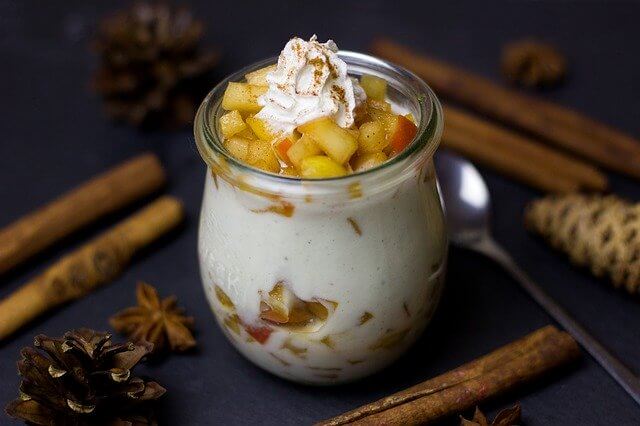
Overview:
Vanilla extract is made using vanilla beans, so it is a fantastic substitute for whole vanilla beans. Essentially, vanilla beans are taken and macerated before being steeped in a mixture of alcohol and water. This helps extract all the oils responsible for the scent and taste of a vanilla bean. An extract made of vanilla beans is much more concentrated and stronger than a traditional bean, so about one teaspoon of the extract is equivalent to a vanilla bean.
Advantages:
The main advantage of choosing vanilla extract is that it has the same taste and scent of vanilla beans. It is also a common choice for home baking of cakes, cookies, and more. Vanilla extract is also less expensive than vanilla beans, and only a few drops are needed in a recipe. These two factors together add up to a huge reason that many choose vanilla extract rather than vanilla beans for their recipes.
Disadvantages:
One of the downfalls of vanilla extract is that since it is often extracted using alcohol, it may contain that substance even after production. Some brands have more alcohol than others, with some having over 4 g present to preserve the vanilla flavor you want for your baked goods. While the alcohol will typically burn away during cooking, vanilla extract has been reported to cause intoxication for some people.
Nutritional breakdown:
Vanilla extract | Amount (per 100 g) | % Recommended daily intake |
Calories | 288 kcal | 14% |
Total fat | 0 g | 0% |
Saturated fat | 0 g | 0% |
Carbohydrates | 13 g | 5% |
Cholesterol | 0 g | 0% |
Salt | 9 mg | 0.5% |
Protein | 0 g | 0% |
Calcium | 11 mg | 1% |
Vitamin B-12 | 0 ug | 0% |
Potassium | 148 mg | 4% |
2. Vanilla powder?
Best for: baked goods, dry mixes, cupcakes, and oatmeal.
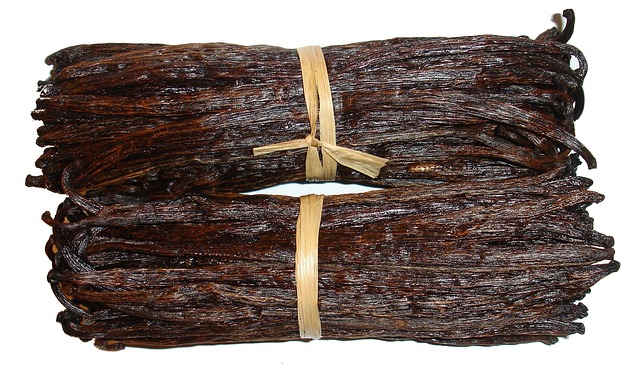
Overview:
In order to create vanilla powder, the vanilla beans are dried out before being pulverized. In contrast to vanilla extract, no alcohol is used to create vanilla powder. This is one of the reasons it is often chosen for cooking dishes like custards and puddings. While some brands of vanilla powder contain nothing more, others have sweeteners added, so checking the ingredient list is crucial. When using vanilla powder, about two teaspoons equal out to a vanilla bean.
Advantages:
A vanilla bean powder can create many dishes and offers the same taste as pure vanilla beans. In many cases, the powder offers iron, copper, and potassium, which can help you keep to a healthy eating regimen. It is going to be less expensive than vanilla beans, so those on a budget can choose this option to save money and avoid adding alcohol to their baked goods.
Disadvantages:
While vanilla powder is convenient and even healthy, it can often contain a large amount of sugar. As we mentioned above, you’ll need to check the packaging before purchasing it if that is a concern for you. Keep in mind that vanilla and other products like vanilla powder can sometimes cause allergic reactions such as headaches, inflammation, and insomnia.
Nutritional breakdown:
Vanilla powder | Amount (per 100 g) | % Recommended daily intake |
Calories | 333 kcal | 16% |
Total fat | 0 g | 0% |
Saturated fat | 0 g | 0% |
Carbohydrates | 0 g | 0% |
Cholesterol | 0 mg | 0% |
Salt | 0 mg | 0% |
Protein | 0 g | 0% |
Calcium | 0 mg | 0% |
Vitamin B-12 | 0 ug | 0% |
Potassium | 0 mg | 0% |
3. Vanilla sugar ?
Best for: brownies, cookies, cake, churros, and oatmeal.
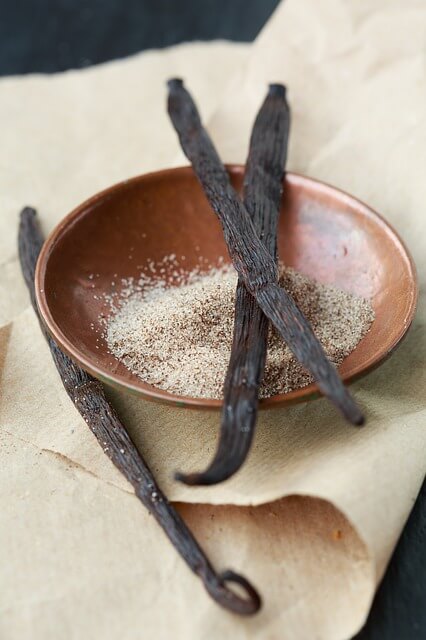
Overview:
Vanilla sugar is the third option for a vanilla bean substitute. It is typically created by mixing together refined white sugar with the dark grains found in vanilla beans to offer the vanilla flavor. When using vanilla sugar, you’ll want to use about one or two teaspoons as an equivalent for a single vanilla bean.
Advantages:
For baked goods that are intended to be rather sweet, vanilla sugar may be the best alternative there is. It adds the vanilla flavor you want along with a touch of sweetness that may allow you to use less sugar than you otherwise would. It also has the same convenience as other powdered ingredients, so you can use it quickly and easily without having to worry about preparation.
Disadvantages:
Sometimes it can be difficult to gain access to vanilla sugar. Not every grocery store will carry it, but you can often find it at online retailers. Another disadvantage of choosing this option is that it contains a large amount of sugar. Those concerned about excess sugar or carbohydrates may want to choose another substitute for vanilla beans to keep to a healthy diet.
Nutritional breakdown:
Ingredient | Amount (per 100 g) | % Recommended daily intake |
Calories | 375 kcal | 18% |
Total fat | 0 g | 0% |
Saturated fat | 0 g | 0% |
Carbohydrates | 100 g | 0% |
Cholesterol | 0 mg | 0% |
Salt | 0 mg | 0% |
Protein | 0 g | 0% |
Calcium | 0 mg | 0% |
Vitamin B-12 | 0 ug | 0% |
Potassium | 0 mg | 0% |
4. Vanilla paste?
Best for: custard, ice cream, cakes, creams, and cookies.
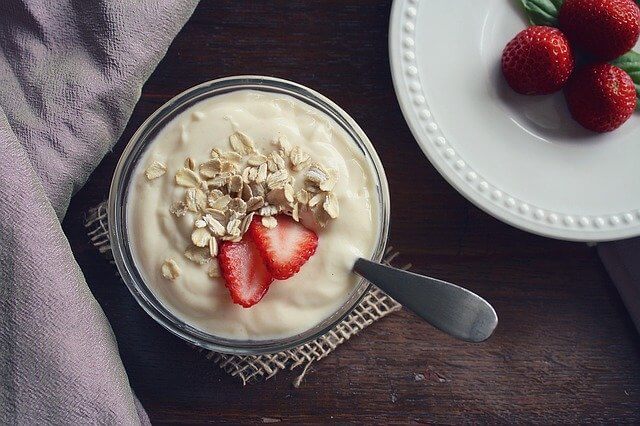
Overview:
Vanilla paste is a product that is created when the grains of a vanilla bean are scraped out and mixed with a binder, typically invert sugar or corn syrup. Since this vanilla bean substitute is created directly from vanilla beans, it offers the flavor that you expect from authentic beans, rather than an approximation that might not be entirely the same.
Advantages:
When using vanilla paste, you don’t have to worry about the taste of your baked goods being off. In addition, this substitution can be used for more than just cakes and cookies. It works well when making whipped cream, custard, and ice cream, too. Vanilla paste is often found at specialty food stores and supermarkets but can also be purchased online.
Disadvantages:
Since vanilla paste uses a binder that is also a sweetener, a little bit will go a long way. This is an ingredient like vanilla sugar that can pack in the carbs and sugars, so those on low-carb diets or who are watching their sugar intake may want to use very little of it or choose one of the other substitutions listed in this article.
Nutritional breakdown:
Vanilla paste | Amount (per 100 g) | % Recommended daily intake |
Calories | 216 kcal | 10% |
Total fat | 0 g | 0% |
Saturated fat | 0 g | 0% |
Carbohydrates | 45 g | 16% |
Cholesterol | 0 mg | 0% |
Salt | 4 mg | 0.2% |
Protein | 0 g | 0% |
Calcium | 0 mg | 0% |
Vitamin B-12 | 0 ug | 0% |
Potassium | 0 mg | 0% |
5. Almond extract?
Best for: cookies, oatmeal, rice, French toast, and coffee.
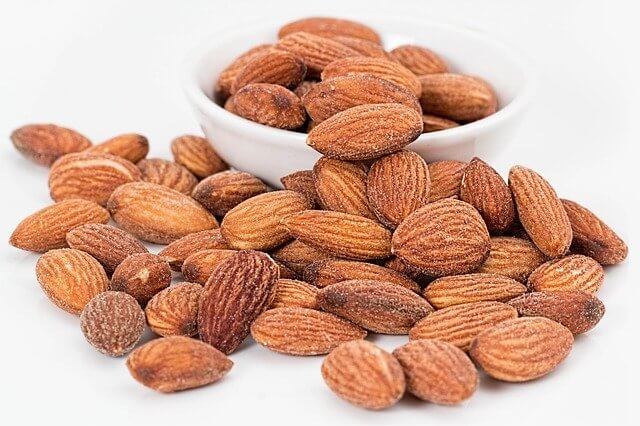
Overview:
While all of the ingredients we’ve looked at so far include vanilla as an ingredient, there are some substitutions that do not include it. Almond extract is an alternative that can substitute for vanilla bean. It consists of cold-pressed almonds that create a yellow oil that is combined with alcohol, just like vanilla extract is.
Advantages:
Those who have vanilla allergies who are looking for substitutes to vanilla beans have fewer options, but almond extract is one of them. As far as health benefits go, almond extract has many vitamins and minerals, as well as some protein. This vanilla bean substitute has a distinct nutty flavor due to the almonds and alcohol mixing. The flavor will increase the longer the extract has to rest before being used.
Disadvantages:
Some will find that the flavor of almond extract is a downfall since it doesn’t contain vanilla. If that flavor is something that is crucial for you, this might not be the best option for you. In addition, many brands of almond extract tend to be quite bold, which only enhances the nutty flavor. Because of that, it’s often a good idea to start with a small amount and add additional extract to your taste.
Nutritional breakdown:
Almond extract | Amount (per 100 g) | % Recommended daily intake |
Calories | 240 kcal | 11% |
Total fat | 0 g | 0% |
Saturated fat | 0 g | 0% |
Carbohydrates | 0 g | 0% |
Cholesterol | 0 mg | 0% |
Salt | 0 mg | 0% |
Protein | 0 g | 0% |
Calcium | 0 mg | 0% |
Vitamin B-12 | 0 ug | 0% |
Potassium | 0 mg | 0% |
6. Maple syrup?
Best for: pancakes, waffles, ice cream, vegetables, hot cereal.
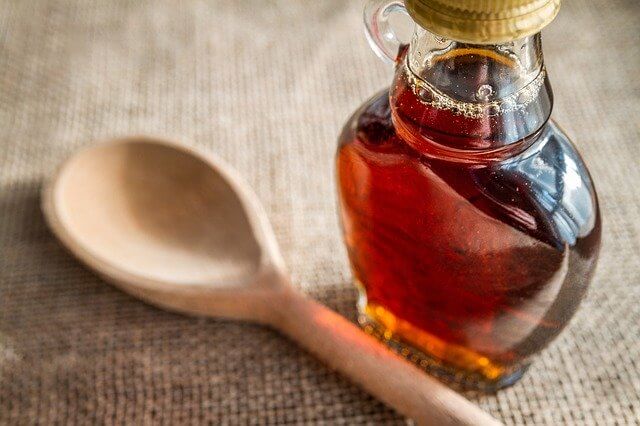
Overview:
One of the most popular sweeteners noted to be more nutritious and healthier than sugar is maple syrup. It also acts as a fantastic substitute for vanilla beans in a wide selection of recipes. Maple syrup is made from the sap found in sugar maple trees and is largely produced in eastern Canada. A hole is drilled to allow the sap to flow out. Then the sap is boiled to remove water and leave only a thick sap that is filtered before use.
Advantages:
Maple syrup has a nutty flavor like vanilla beans while also offering a hint of sweetness. It’s also readily available on the shelves of any grocery store, so getting your hands on it is nearly effortless. Along with almond extract, maple syrup is an alternative that does not include vanilla, so those who are allergic to vanilla beans can use it without concern of a reaction.
Disadvantages:
While maple syrup has some sweetness, it isn’t to the level of vanilla beans. When using it as a substitute, you will want to use about one and a half times the amount of vanilla beans called for in a recipe. It also has a sticky texture that can have an effect on the consistency of your dish when it is complete.
Nutritional breakdown:
Maple syrup | Amount (per 100 g) | % Recommended daily intake |
Calories | 333 kcal | 16% |
Total fat | 0 g | 0% |
Saturated fat | 0 g | 0% |
Carbohydrates | 88 g | 32% |
Cholesterol | 0 mg | 0% |
Salt | 367 mg | 19% |
Protein | 0 g | 0% |
Calcium | 0 mg | 0% |
Vitamin B-12 | 0 ug | 0% |
Potassium | 0 mg | 0% |
The Bottom Line
Vanilla beans are used in all sorts of sweet desserts and other dishes such as oatmeal, pancakes, waffles, and more. However, sometimes these beans can be overly expensive, which leads to the need for a substitution. Thankfully, there are six great vanilla bean substitutes available for use in your favorite dishes. Some of them are completely without vanilla, so those with an allergy to the ingredient can still enjoy tasty meals using another ingredient.
Top vegan picks
Vanilla beans and their alternatives tend to be vegan, so those adhering to the diet should have no problem choosing an option for their baking and cooking needs. When looking at all the options, vanilla extract and vanilla powder are both great choices for vegan eaters. They are both easy to use, can be found in supermarkets everywhere, and provide the vanilla flavor that is being sought.
Top healthy picks
When health is your priority, looking at the nutritional information is a must. Most of the vanilla bean substitutes listed here are fairly healthy, but you should watch out for those with excess sugar. Vanilla sugar is going to contain a large amount of sugar, while vanilla paste and maple syrup often contain a large amount of carbs. Sticking with vanilla powder or almond extract may be a better choice.
Top convenient picks
Most of these vanilla bean substitutes are relatively convenient for cooking and baking. Vanilla and almond extract both are a simple matter of pouring a few drops in and moving on. Maple syrup is also easy to use since it squeezes right out of a bottle. However, whatever your choice, the convenience factor is high when substituting this ingredient.
Top convincing picks
The top vanilla bean substitute when it comes to being similar to the original ingredient is probably going to be vanilla paste. The reason for that is because it contains the actual seeds that come from vanilla beans. However, vanilla extract and vanilla powder also have a flavor that is similar, although the texture of these two items can be different from vanilla beans.
Sources:
https://www.thespruceeats.com/history-of-vanilla-beans-1809274
https://www.nutrition-and-you.com/vanilla-beans.html
https://littlegreendot.com/10-uses-vanilla-pods/
https://www.webmd.com/vitamins/ai/ingredientmono-206/vanilla
https://www.myrecipes.com/ingredients/what-is-almond-extract-made-from
https://www.healthline.com/nutrition/maple-syrup